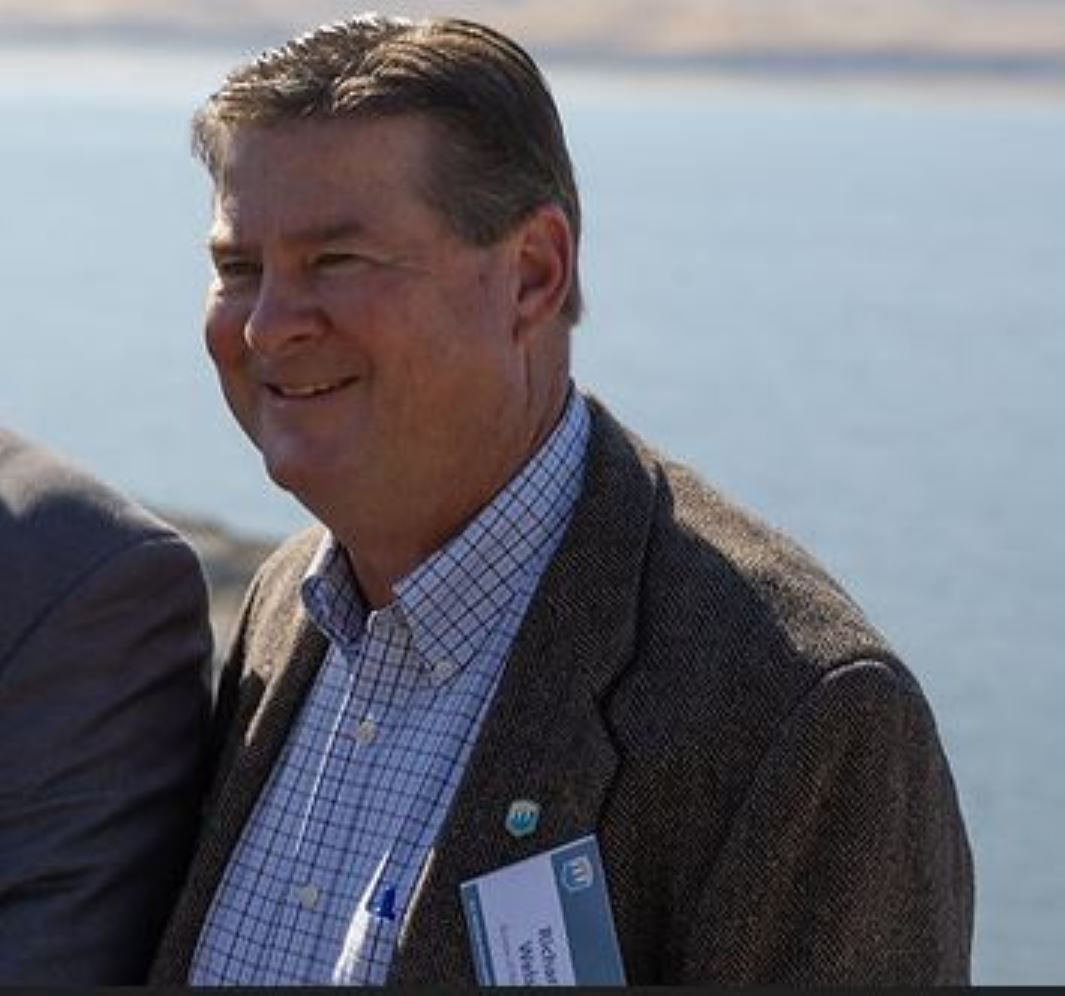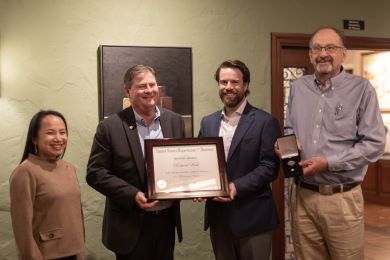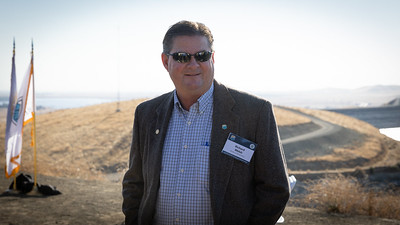Richard Welsh and his father combined for about 80 years of knowledge and expertise
 Principal Deputy Regional Director Richard Welsh
Principal Deputy Regional Director Richard Welsh
Working for Reclamation has been a family tradition for Richard Welsh.
Welsh, 61, the principal deputy regional director at the California-Great Basin Region since 2019, is retiring from Reclamation Nov. 30 after 38 years of service.
He is the second Welsh to devote a career of public service to Reclamation.
His father, Robert, spent 41 years with Reclamation, beginning just out of college with construction of the San Luis Project in Los Banos.
Richard Welsh leaves Reclamation just as the B.F. Sisk Dam Raise and San Luis Reservoir Expansion Project is formally underway. The first authorized reservoir expansion in more than a decade, the expansion bookends the B.F. Sisk Dam Safety of Dams Modification Project, Reclamation’s largest dam safety project under the 1978 Safety of Dams Act.
In a way, it represents the closing of a process that started when Richard was a toddler in the early 1960s and his father worked on the creation of the dam and reservoir during the Kennedy administration.

Today, Welsh departs having managed an integrated team of Reclamation staff and coordinated with the San Luis and Delta-Mendota Water Authority during the planning, environmental, and engineering activities for the Expansion Project.
Welsh’s upbringing around his father’s engineer-related activity with Reclamation shaped the course of his academic and career choices.
“My dad had a large influence on not only the degree I pursued … but I saw how he was able to live as a Reclamation employee,” he said.
Welsh said he was too young to remember much about the days in and around the construction of the reservoir’s original dam. It was later when his father worked on the Auburn Dam project that he got his first direct exposure to the detail and complexity of a Reclamation-sized construction project. He also witnessed the tight bond that existed with the community of experts and professionals gathered to work on the project.
“We’d go down to Roseville and there were these huge picnics for all of the employees,” he said. “I remember those picnics pretty vividly.” The exposure to construction projects infused a spirit of creativity in Welsh, who followed his father in becoming a civil engineer.
Later, his career path took him to Reclamation’s door and a small construction office in Boulder City, NV. He joined the California-Great Basin Region in 1991.
Looking back, Welsh said completion of the Shasta Temperature Control Device was a top achievement, given the scope and purpose of the project as well as its unprecedented nature. Up to that point, Reclamation had to bypass power generation to keep the downstream flow cold enough for migrating fish. The temperature control device was a massive, unique piece of engineering design that had never been attempted.
“We had a wonderful team out here helping me build that thing as well as support from the Denver office,” he said. “It was profound and unique and offered a rewarding experience for the entire team.”
Engineers like to build things and Welsh is no exception. Had he come from a previous generation, he might have got the chance to fulfill that accomplishment.

“One of the things I wanted to do when I started with Reclamation was to build a dam,” he said. “I never really was afforded that opportunity. I guess the closest you can say is we’ve done a lot of safety of dam work within this region … so that’s sort of working on a dam.”
Today, the emphasis is on making sure the many components of the Central Valley Project are in the right condition to keep providing the water and power resources that benefit so many people.
“We’re at a stage where we have a wonderful opportunity to try and improve, replace or enhance a lot of our facilities that are getting old,” Welsh said. “A lot of the CVP facilities, while they have a design life theoretically of 100 years, they weren’t designed to not ever have anything done to keep them running efficiently and effectively.”
Meanwhile, Welsh said Reclamation strives to modify and adapt its structures to better meet current operational requirements to deliver water and power within the bounds of regulatory requirements, particularly on the environmental side.
While Reclamation retains vestiges of the tight-knit, familial atmosphere in which he was raised and later worked, the realities of today’s workforce do not fully mirror years gone by, Welsh said.
“When I started, there was a lot of [other] people that started early in Reclamation and made it a career,” he said. “Growing up in Reclamation, starting your career and finishing it there, that's probably not as prevalent as it used to be, but that's probably true for a lot of organizations.”

